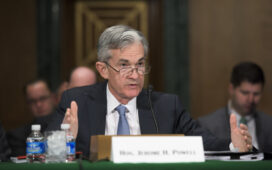Gold Plunges as US CPI Data Questions the Rate Cut in June
The (XAU) price plunged by more than 1.2% on Tuesday as the (USD) strengthened following the release of higher-than-expected US inflation figures.
The US core Consumer Price Index (CPI) increased by 0.4% in February, while the headline CPI rose towards 3.4% year-on-year, above analysts’ estimates and above the Federal Reserve’s (Fed) official target. The figures suggest that inflation in the US remains sticky and questions the central bank’s ability to ease its monetary policy in 2024. Still, it seems the market isn’t ready to dismiss the possibility of the interest rate reduction in June. According to the CME FedWatch Tool, traders continue to price in a 57% chance of a 25-basis-point (bps) interest rate cut during that month.
“We still believe the disinflation case is intact and that seasonal patterns at the start of the year have pushed inflation higher, but the Fed was looking for greater confidence that inflation was sustainably headed to 2%, and that confidence cannot be found in the CPI report,” said Conrad DeQuadros, the senior economic advisor at Brean Capital.
While gold bulls will continue to look for any reason that may drive XAU/USD higher, the fundamental and technical picture for the pair has worsened over Tuesday.
XAU/USD was flat during the Asian and early European trading sessions. Today, the economic calendar has no major news that could potentially provide strong momentum for gold traders. As long as the XAU/USD remains below 2,170, it may be reasonable to sell the rallies. ‘In the short run, prices will see some consolidation and probably stabilise around the 2,100 level and will break above 2,200 by the end of the Q2 this year,’ said Aakash Doshi, the head of commodities at Citi Research.
EUR/USD Holds Steady Despite Higher-Than-Expected US CPI Figures
briefly dropped below the important 1.09000 level on Tuesday but then recovered and finished the day essentially unchanged.
Higher-than-expected US inflation figures put upward pressure on the US dollar, but it didn’t significantly affect EUR/USD. One of the reasons why the pair didn’t plunge deeper is because eurozone inflation also remains elevated. Germany, the eurozone’s major economy, reported a 2.7% year-on-year increase in the Harmonized Index of Consumer Prices (HICP) yesterday, aligning with the market’s expectations but being above the European Central Bank’s (ECB) inflation target. Still, traders continue to expect the ECB to deliver slightly more rate cuts than the Federal Reserve (Fed) in 2024. In theory, this divergence in monetary policy expectations should exert downward pressure on EUR/USD. However, because the divergence isn’t substantial, a sideways trend will likely persist for some time.
EUR/USD was essentially unchanged during the Asian and early European trading sessions. The market will likely remain relatively quiet for the rest of the day as the economic calendar is rather uneventful. Most traders will be preparing for the US Producer Price Index and Retail Sales data releases tomorrow. The short-term technical bias remains neutral as EUR/USD continues to trade within the narrow 1.09000–1.09800 range.
CAD Weakens Due to Higher-Than-Expected US Inflation Figures
The (CAD) reached a 5-day low on Tuesday due to unexpectedly high US inflation figures.
US consumer prices rose significantly due to increased gasoline and shelter costs, hinting at persistent inflation that could force the Federal Reserve (Fed) to postpone the expected June rate cut for later. Meanwhile, Friday’s data revealed that Canada’s economy gained 40,700 jobs in February—twice the expected figure—even as the central bank keeps its interest rates highest in 22 years. Wage growth experienced a slowdown for the second consecutive month. Moreover, despite the job gains, the unemployment rate increased slightly to 5.8%, as reported by Statistics Canada.
“There is still evidence from today’s data that labour market conditions are loosening, but only very gradually and not in a way that demands an imminent reduction in interest rates,” observed Andrew Grantham, the senior economist at CIBC Capital Markets.
He anticipates the first rate reduction in June. The Bank of Canada (BOC) may not want to diverge too much from the Fed interest rate path if it leads to a weaker Canadian dollar and higher import costs.
USD/CAD was mostly unchanged during the Asian and early European trading sessions. Today, the economic calendar is rather uneventful, so strong moves in the market are unlikely. The recent CFTC data indicates a significant shift in sentiment, putting a strong bearish pressure on the Canadian dollar ahead of the BOC interest rate decision. The trend might persist today due to the absence of market-stimulating news.





